
Two views of a lighthouse on a rise near a rocky beach.
It was early enough that the sun was still low.
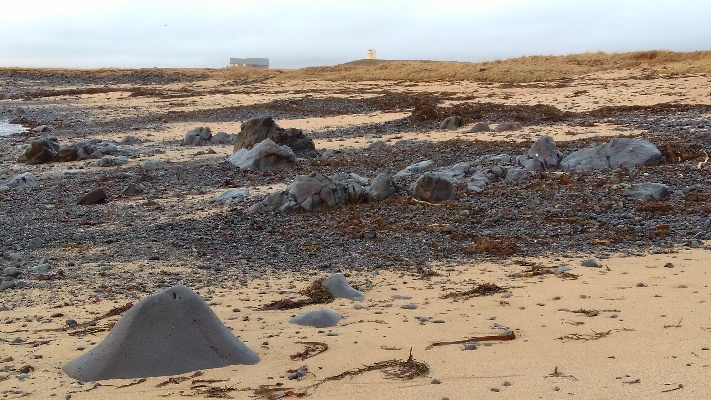
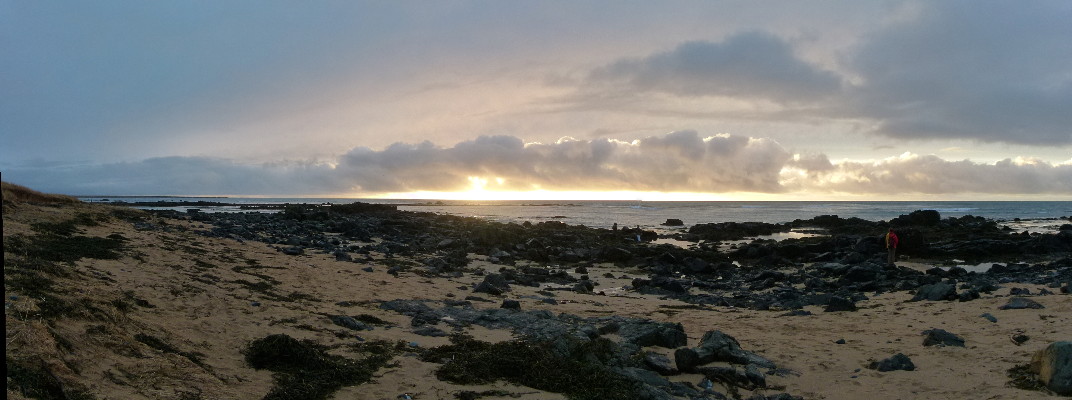

Our walk along the shore was chilly but that is to be expected in Iceland in the winter.
We saw some ducks among the rocks and seaweed.
Then something coming toward us.
The first seal we saw on the trip.
And one lonely seagull
Soon after we left the beach we stopped where Axlar-Björn lived more than 450 years ago.
He is famous for being Iceland's only known serial killer.
He had a dream that he would find something that would make him famous.
The next day he found the ax he is shown holding and later confessed to using it as one of the ways he murdered 9 people.
However more bodies were found so it is suspected that he killed at least 18.
The tale of his conviction and execution is far too gruesome for me to repeat here.
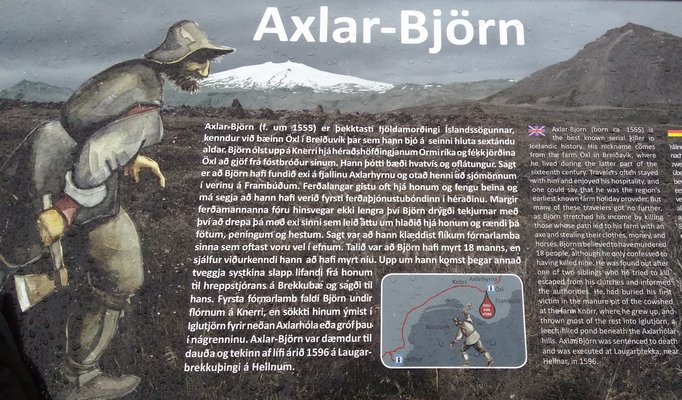
As we drove along we saw waterfalls on the cliffs and some directly into the ocean.
We stopped at the small harbor at Arnarstapi.
The village at the base of Mt. Stapafell and a bit of the trail we walked along the coast.
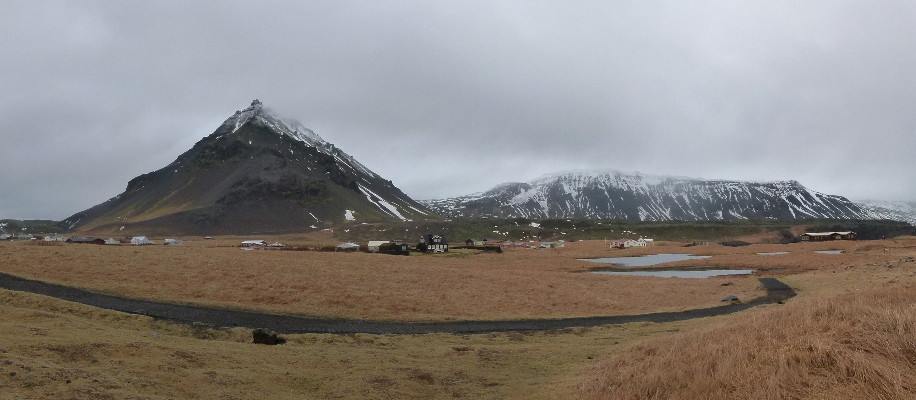
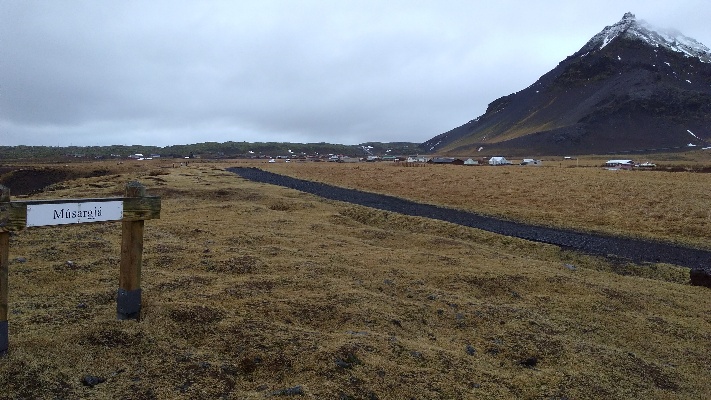
Views from the trail.
This large structure built in stone is the embodiment of a legendary figure recounted in the Icelandic sagas as Bárđur Snćfellsás, a half-human, half-troll/ogre from the early 14th century Icelandic saga.
Basalt columns end and side view.
These form when magma contracts as it cools slowly deep in the earth.
Most are hexagonal though few are regular with equal sides and angles.
Waves working on the cliffs have made a natural bridge to nowhere not far from the village.
It is called Gatklettur the arch rock.
With the tide in waves break through it.
When it is out there is a rocky beach below.
The Ingjaldscholl church near the Snaefellsjokull glacier,
We stopped for lunch at a cafe in the village of Hellnar.
If you have done much backpacking you are probably familiar with the stove that was invented there.
Nearby this little bird was looking for seeds or bugs in the grass.
A rainbow.
This one the full arch.
The weather and low sun angle made them very common.
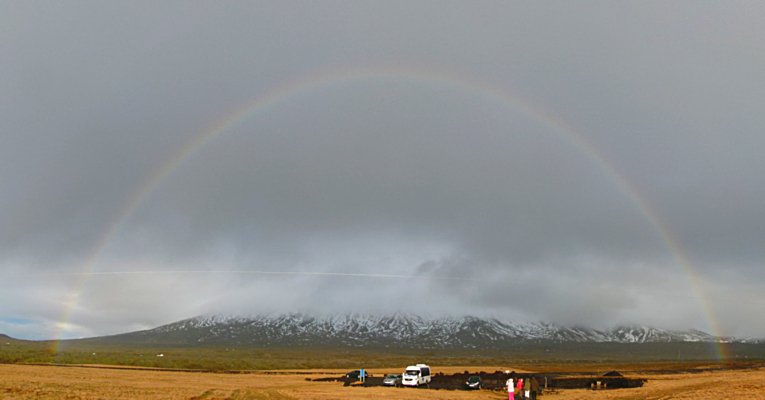
A little further on we stopped at the Vatnshellir Cave.
It was formed about 8000 years ago when lava hardened at the surface and then the still liquid part underneath drained out.
This diagram shows what we were to encounter on our Jules Verne like trip.
The link is even more clear when you realize the setting for his novel "Journey to the Center of the Earth" was a volcano on this peninsula..
Our guide and other intrepid explorers.
A rock colored by the volcanic fumes that were deposited on it long ago.
The entrance.
Into the depths.
These stalactites were formed as lava dripped from the ceiling/
This looks a lot like flowstone that would be found in a limestone cave but of course it isn't.
And colors from the heat and mineral deposits.

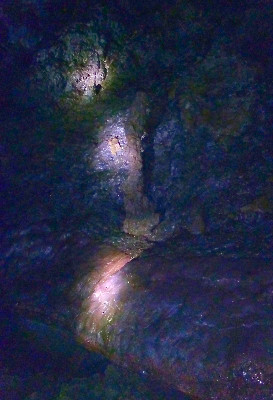
Explorers far below.
In this cave this set of stairs and a fear of heights could be a problem.
The Path of the Bull, Nautastigur, is lined with impressive cliffs and rock formations.
It leads to a black stony beach, Djupalonssandur,
On the trail we passed Gatklettur, the hole in the rock.
And arrived at the beach.
There we came on four stones at the beach, referred to as lifting stones.
Fishermen used them to test their strength by lifting them onto a platform..
The heaviest of these stones, named Sterkur (Icelandic for Full-strong), weighs 154 kg (339.5 lb.).
The second stone in weight weighs 100 kg (220.5 lb.) and is called “Halfsterkur”, Half-strong.
The next stone, hálfdrćttingur ("weakling") weighs 54 kg (119 lb.)
Those fishermen who could not lift this stone were not accepted as oarsmen on the fishing boats.
The lightest, amlóđi ("useless") weighs only 23 kg (50.7 lb.)
The remains of the Grimsby trawler Epine (GY7) can be seen there as well.
I found a picture of it before it wrecked on March 13th 1948 so you could see what it was like.
An Icelandic rescue party got a line to the vessel and took four of her crew off by breeches buoy.
One other crew member managed to swim ashore but fourteen of her crew were lost as heavy seas swept the wreck.
Clinging to the bridge, skipper Alfred Loftis was heard to shout:“I do not mind what happens to me so long as the boys are all right. Look after the boys.”
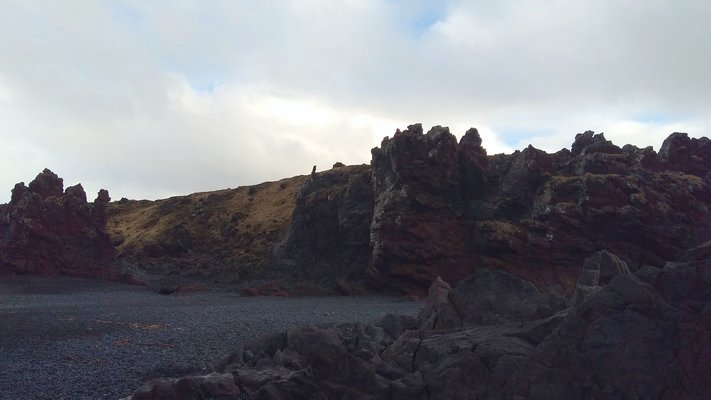
Fantastic lava structures, some with fanciful names like Songklettu (church of the elves) and Kerling (a troll who turned to stone when the daylight caught her).

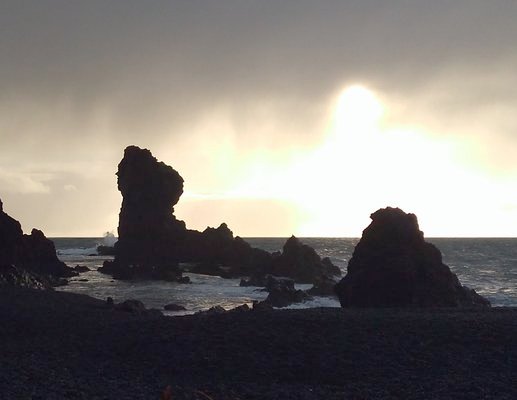
And another rainbow.
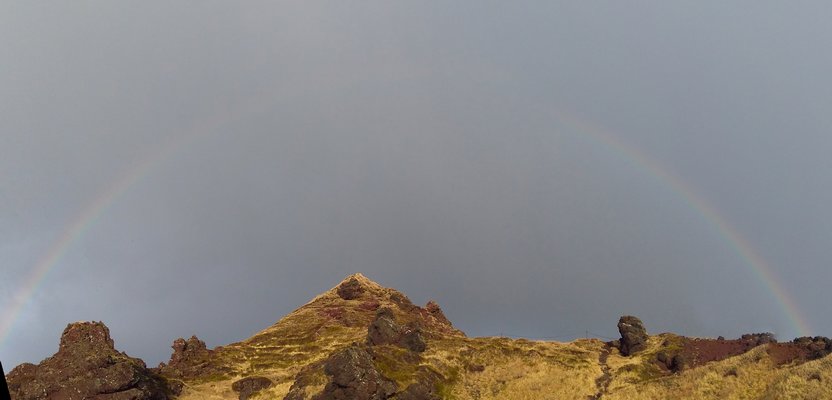
Here is a panorama from inside the crater of an volcano.
Not currently active.


